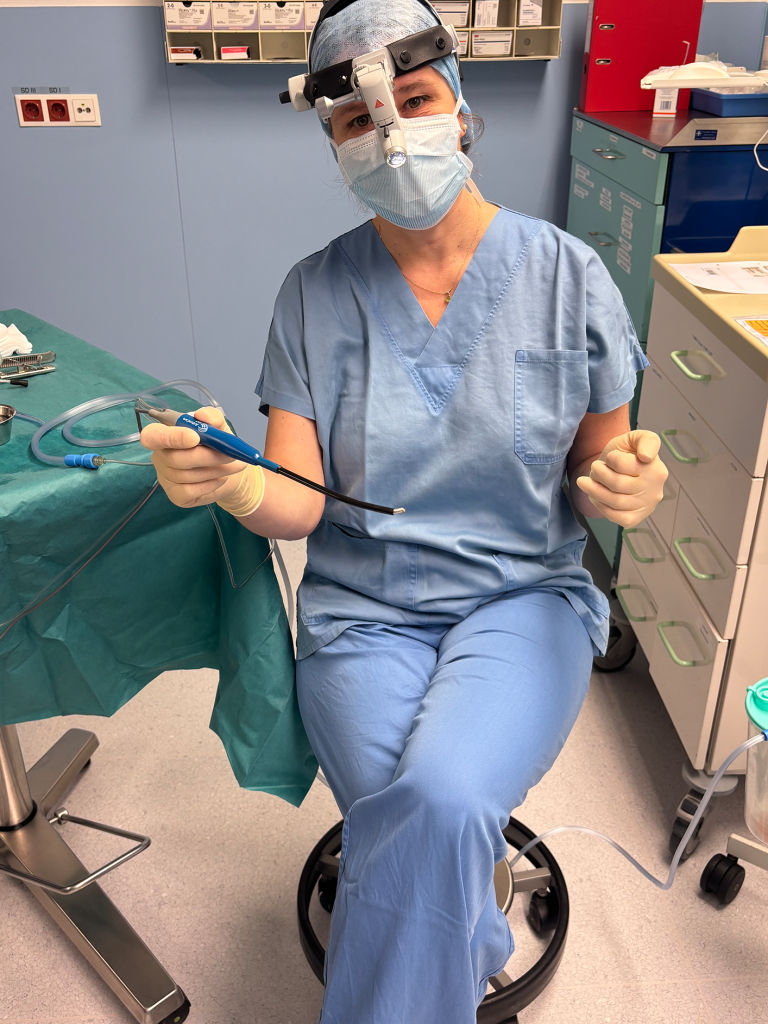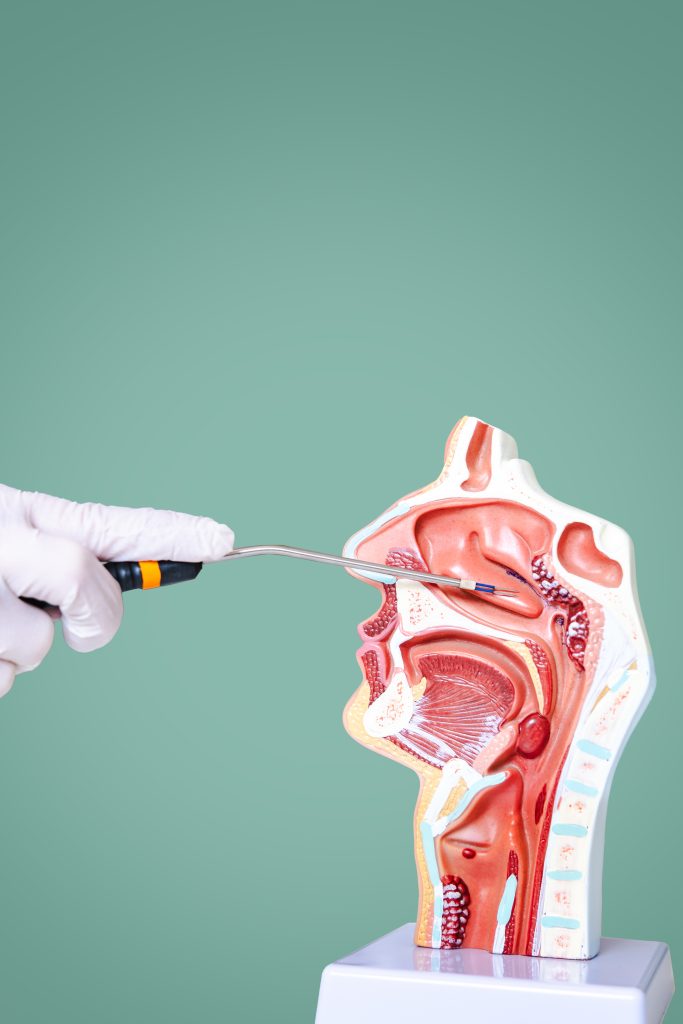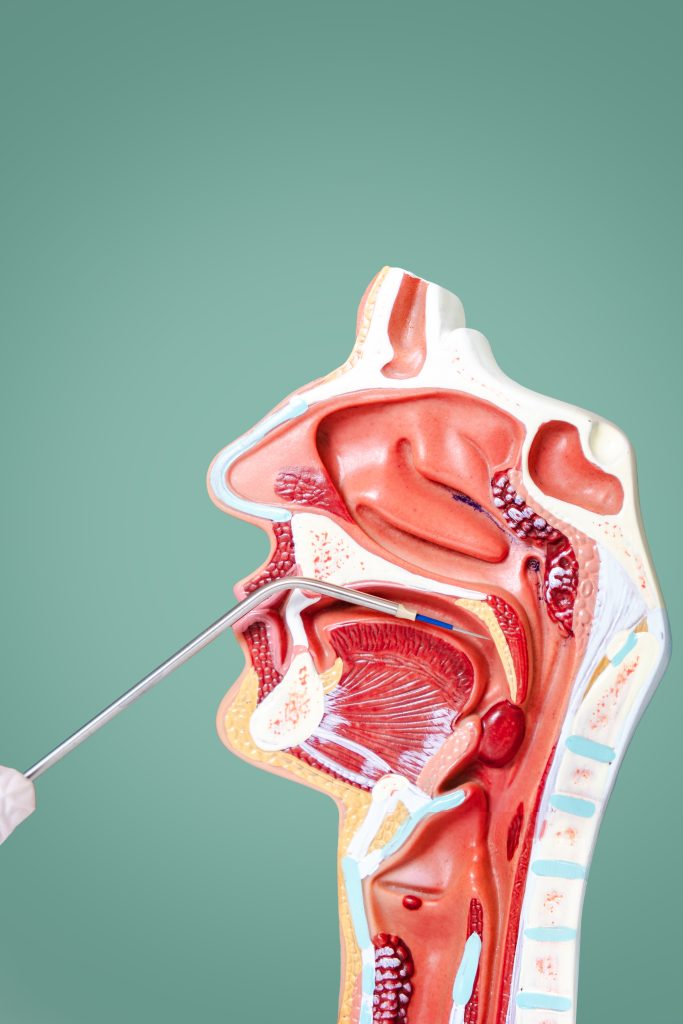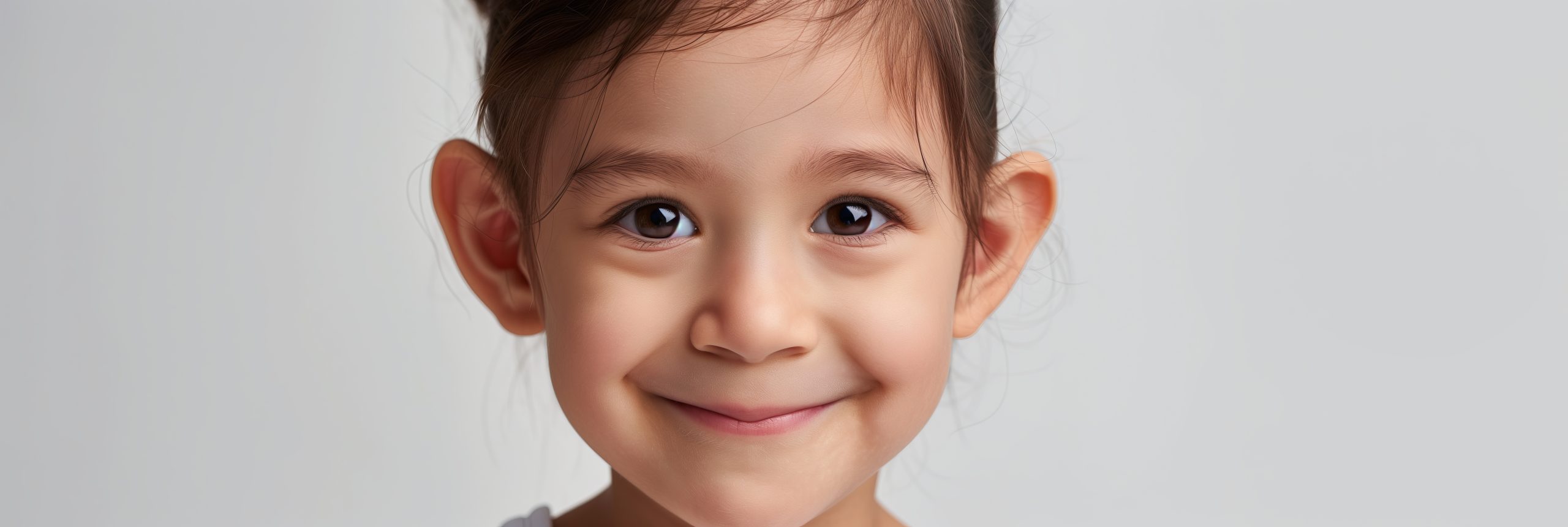ENT – Operations
Information about the surgical procedures that I offer in my practice
“Polyp removal” - Adenoidectomy
I use the gentle, precise and careful COBLATION Plasma Technology for this. The “polyps” in the nasopharynx, i.e. behind the nose, are, so to speak, “eradicated”, mostly without significant bleeding and burning. The wound therefore heals faster and, above all, with less pain, the risk of secondary bleeding is kept low!
Details
- Time required: Physical rest for 10-14 days
- Risk of secondary bleeding: low
- Pain: little to none

Partial removal of the palatine tonsils - Tonsillotomy
This operation can be performed on both children and adults. The indication for this is the enlarged palatine tonsil, which forms an obstacle in the throat and makes breathing and possibly swallowing difficult. A common symptom is snoring. Here, too, the gentle, precise and careful COBLATION Plasma Technology is used. The outstanding parts of the palatine tonsils are “eradicated”, mostly without significant bleeding and burning. The wound heals faster and, above all, with less pain, the risk of secondary bleeding is kept low! The patients are not exposed to unnecessary risks.
Details
- Time required: 1-2 nights in hospital, 14 days of physical rest
- Risk of secondary bleeding: low
- Pain: little
Removal of the palatine tonsils - Tonsillectomy
In the case of severe, frequent inflammation of the tonsils, it is advisable to remove the entire tonsil tissue in order to eliminate the risk of renewed flare-ups of tonsillitis and abscess formation.
Details
- Time required: 1-3 nights in hospital, 14 days of physical rest
- Risk of secondary bleeding: low to medium
- Pain: moderately severe
Nasal septum straightening - Septoplasty
Nasal septum
straightening - Septoplasty
A crooked, deviated nasal septum is the cause of many complaints in the ear, nose and throat area. Only if there are complaints is it advisable to straighten the nasal septum in order to allow more air to flow through the nose. The operation is invisible from the outside (no bruises/swellings), but inside the nose is gentle plastic-surgical method “rebuilt” with a . The lower nasal turbinates are also gently reduced in size with a radiofrequency needle in order to gain even more space for the air.
During the operation, a light, small tamponade is sometimes placed in the nose as a placeholder, but it can be easily removed the next morning. However, it is usually not absolutely necessary to tamponade the nose! If you have any concerns about the nasal tamponade, please feel free to discuss it during the surgical consultation!
Crusts in the nose and a feeling of dryness last a little longer, up to 6-10 weeks, so regular care of the nose by an ENT specialist and patient is equally important!
Details
- Time required: 1 night in hospital, physical rest for 10-14 days.
- Risk of secondary bleeding: low
- Pain: none (rarely headaches on the 1st day after anesthesia)
Sinus surgery - FESS, Functional Endoscopic Sinus surgery
After a previous CT scan of the sinuses, you will be operated on carefully and gently under endoscopic view, the thickened mucous membrane and, if necessary, real nasal polyps (not to be confused with the “polyps” in children!!!) are removed. A slight nasal tamponade can also be helpful with this operation, but it is not always absolutely necessary. The tamponade is easily removed the next morning.
Details
- Time required: 1-2 nights in hospital, physical rest for 14 days.
- Risk of secondary bleeding: low to medium
- Pain: little to none
Nasal turbinate reduction with radiofrequency
No nasal packing necessary!
The nose is inserted with numbing cotton pads and the blocking, thickened lower nasal turbinate is treated with the radiofrequency needle to allow more space for air in the nose. There is usually no or very little bleeding, the result can be felt after just a few days and is long-lasting.
This procedure is ideal for the treatment of disturbing nasal breathing obstruction in allergies, in minor nasal septum curvatures (less complex alternative to complete nasal septum surgery) or in Privinism, the continuous use of nasal sprays for chronically congested nose.
Details
- Time required: approx. 30-45 minutes, in the practice, no anesthesia necessary. No sport for about 1 week.
- Ability to work (office work): immediately
- Pain after the operation: none
- Risk of secondary bleeding: low or none


Palate tightening with radiofrequency therapy / UPPP
In patients with less pronounced gag reflex, the palate can be tightened with a radiofrequency needle after local anesthesia (injections).
After previous sleep screening (polygraphy), the palatal arch is tightened by means of radiofrequency needle punctures, if necessary, the uvula (uvula) is shortened, thereby reducing the disturbing snoring noise.
If necessary, this operation can be combined with the reduction of the palatine tonsils: using Coblation Plasma Technology, both palatine tonsils are shortened (“eradicated”). This makes the reduction of the tonsils possible with a safer method than the complete removal of the tonsils, with less risk of bleeding and pain! The snoring noise is reduced.
Time required: 1 night in hospital (UPPP also possible on an outpatient basis under local anesthesia), then physical rest for 7-10 days
Details
- Time required: 30-45 minutes. No sport for 2 weeks.
- Pain: mild to moderately severe for approx. 2 weeks - controllable with painkillers
- Risk of secondary bleeding: low or none
Paracentesis (eardrum incision), tympanostomy tube insertion
In adults, it is possible to perform a relieving eardrum incision, or even tympanostomy tube insertion, under local anesthesia in the practice.
For small children, it is more pleasant to operate under short laryngeal mask anesthesia.
Details
- Pain: low-medium
- Bleeding risk: none
Otoplasty (Otoplasty)
Protruding ears can be perceived as disturbing at any age. For children between 4-16 years, health insurance companies cover up to 90% of hospital costs, depending on the findings. A prior request to your health insurance company for reimbursement of costs is recommended.
Adults can also have the operation performed under local anesthesia.
I use a combination of thread and incision techniques to achieve the best result. Sometimes it is necessary to remove a piece of cartilage from the too deep concha, i.e. the “tub” of the auricle, or to “tame” a too protruding earlobe.
Details
- Time required: 1 night in hospital for operations under anesthesia. The ear bandage is usually removed after 1 week, wearing a headband at night is still recommended for a further 6-8 weeks.
- Pain: low
- Bleeding risk: low

Small operations under local anesthesia
Removal of small raised skin and mucous membrane growths in the head/neck area, biopsies of skin/mucous membrane head/neck area, removal of lip cysts under local anesthesia
Operations under general anesthesia are carried out exclusively in the Privatklinik Goldenes Kreuz (Lazarettgasse 16-18., 1090 Vienna).
Please clarify the possible reimbursement of costs with your private insurance and/or the accounting department of the Privatklinik Goldenes Kreuz in good time before your operation! I cannot take any responsibility for later ambiguities.
